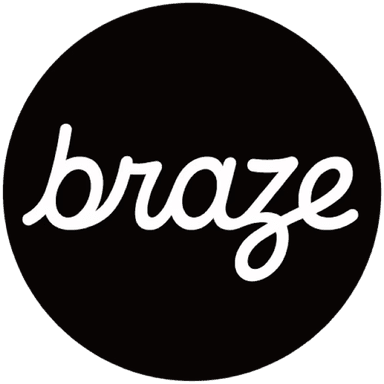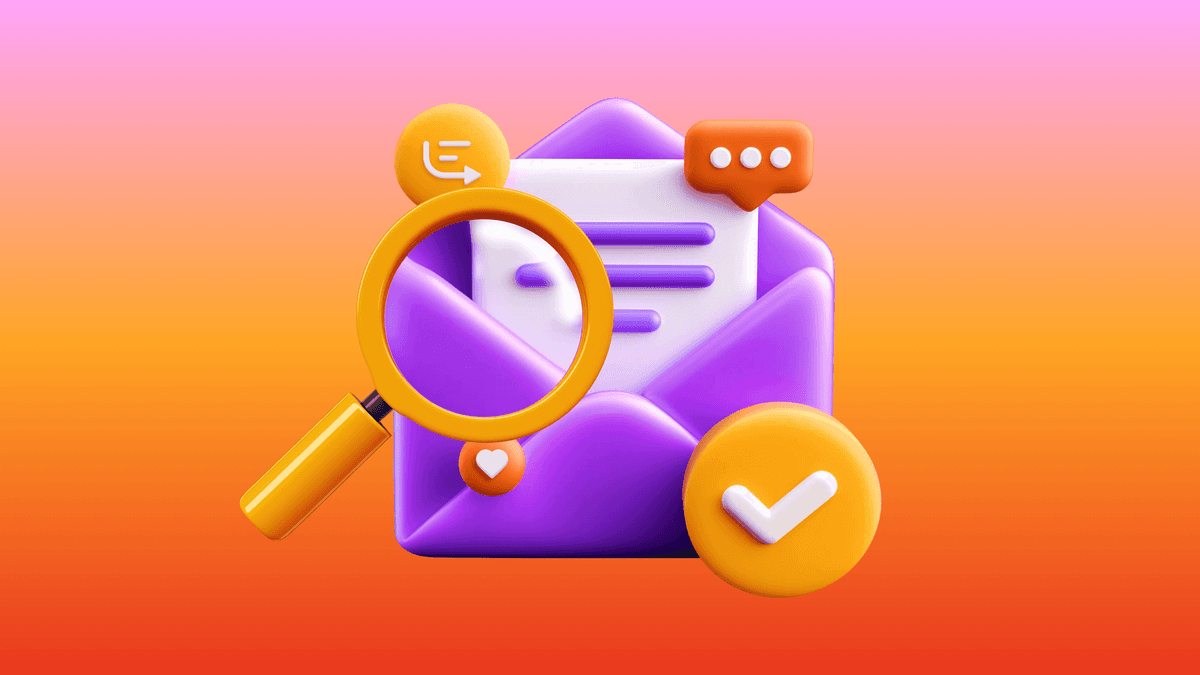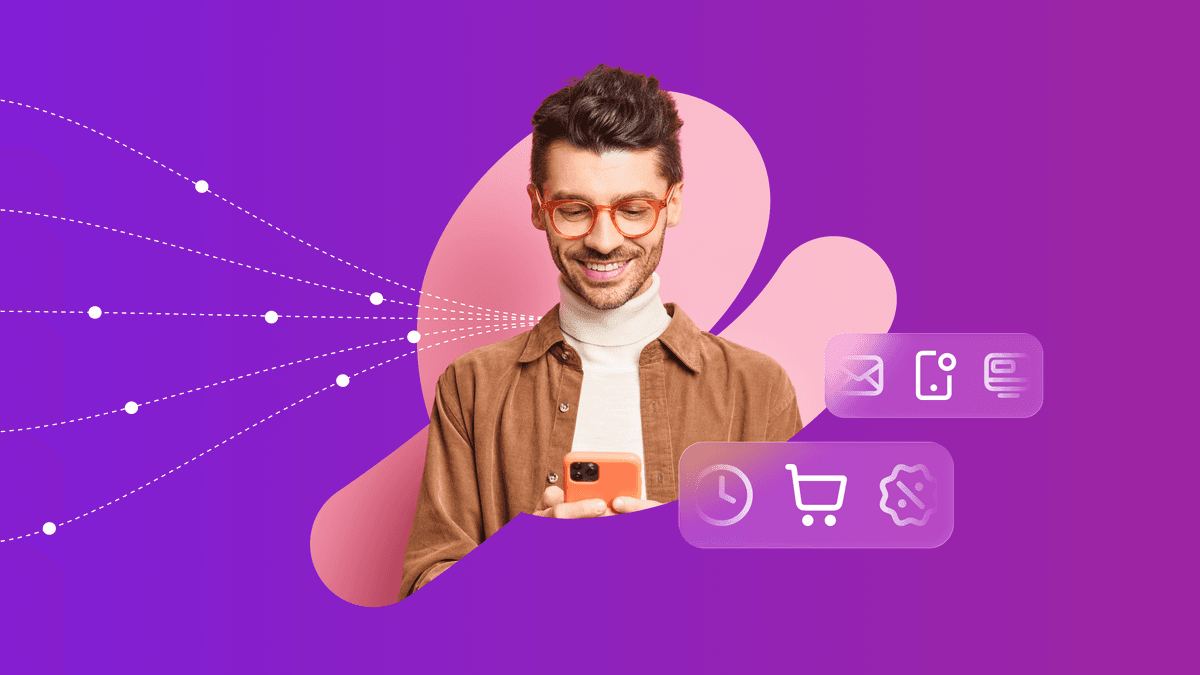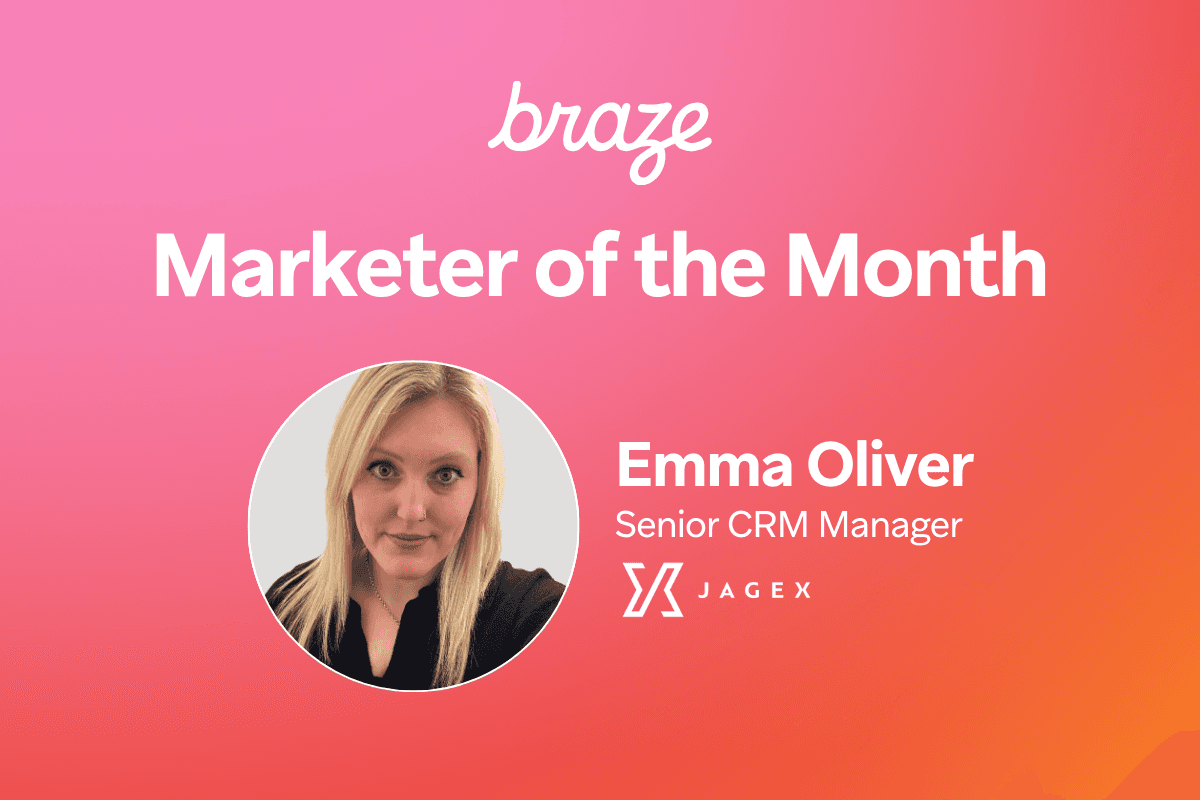Reinforcement learning: What it is and how it powers smarter marketing
Published on November 14, 2025/Last edited on November 14, 2025/10 min read


Team Braze
Marketers juggle endless choices—what to say, when to say it, which channel to use—all while trying to make every interaction feel personal. Static rules and fixed campaigns can only take you so far before they stop keeping pace with real customer behavior. Reinforcement learning offers a smarter way forward, helping brands adapt and improve with every interaction.
In this guide, we’ll break down how reinforcement learning works, explore its impact across industries, and dive into the role it plays in modern marketing. We’ll also show how BrazeAI Decisioning Studio™ puts these ideas into action, giving brands the tools to create experiences that feel relevant in the moment and keep customers coming back.
Contents
What is reinforcement learning?
How reinforcement learning works
Benefits and challenges of reinforcement learning
6 ways that brands use reinforcement learning in marketing
Real-world applications of reinforcement learning
How BrazeAI Decisioning Studio™ applies reinforcement learning
Final thoughts on reinforcement learning
What is reinforcement learning?
Reinforcement learning (RL) is a type of machine learning that learns through experience. In supervised learning, systems are trained with labeled examples—they’re told the correct outcome for each situation. In unsupervised learning, systems look for patterns in unlabelled data on their own.
Reinforcement learning works differently. It learns by making decisions, observing the results, and improving its approach over time. There are no fixed answers, just feedback that helps the system get better with every action.
For brands, this means an AI system can decide what message, channel, timing, or offer is most likely to drive a response—and then refine those choices based on what customers actually do.
BrazeAI Decisioning Studio™ uses reinforcement learning in this way. It analyzes real customer interaction data—like opens, clicks, purchases, and engagement across channels—and uses that feedback to make smarter decisions the next time. Each send or message becomes another data point that improves the system’s understanding of what works for each individual.
How reinforcement learning works
Reinforcement learning operates through a structured decision-making process known as a Markov decision process (MDP). In an MDP, outcomes depend on both the current situation and the action chosen—so the system must think ahead rather than react in isolation.
Within this setup, several key components work together:
- Agent: The learner or decision-maker.
- Environment: The system the agent interacts with—such as a game, market, or customer dataset.
- Actions: The options available to the agent.
- Rewards: The feedback signal showing how effective an action was, either immediately or over time.

From these elements, reinforcement learning builds two guiding tools:
- Policies, which define the strategy the agent follows when choosing actions.
- Value functions, which estimate how good a given action or state is for achieving long-term rewards.
To improve performance, reinforcement learning algorithms continuously update these policies and value functions. The main types include:
- Q-learning, which maps every state and action to an expected reward and gradually learns which choices pay off.
- Deep Q-Networks (DQN), which use neural networks to handle large, complex environments with many variables.
- Policy Gradient methods, which fine-tune the policy itself, increasing the likelihood of actions that maximize results.
Each cycle through this process strengthens the system’s ability to make accurate, data-driven decisions. Instead of simply predicting what might happen next, reinforcement learning uses those insights to decide and drive the consumer to take action—responding to real-world feedback and optimizing outcomes over time.
The benefits and challenges of reinforcement learning in marketing
Reinforcement learning is changing how marketers approach personalization, testing, and decision-making. It brings clear advantages in speed, scale, and precision—but it also introduces new challenges around data, governance, and control. Understanding both helps teams apply RL effectively and responsibly.
Advantages of reinforcement learning
Real-time personalization: RL reacts to customer behavior as it happens. If someone shifts from browsing on desktop to engaging via mobile, the system can instantly adjust timing, content, and channel to stay relevant.
Continuous learning and adaptation: Every interaction feeds back into the model, improving future decisions. Instead of setting static rules, marketers can run campaigns that learn and refine themselves over time.
Smarter experimentation: RL runs many micro-experiments at once, quickly identifying which messages, offers, or channels perform best. This makes optimization faster and more efficient than traditional A/B testing.
Stronger customer value: Reinforcement learning identifies which actions build retention and loyalty over time. It helps brands increase customer lifetime value while protecting margins and improving overall efficiency.
Challenges of reinforcement learning
Data quality and scale: RL depends on learning from real interactions. If the data is incomplete or inconsistent, results can lag. A strong foundation—such as a customer engagement platform—is key to reliable learning.
Reward design: “Rewards” define what success looks like for the system. Poorly defined goals, such as optimizing only for clicks, can push the algorithm toward short-term wins instead of sustainable results.
Unexpected behavior: RL explores new strategies, and sometimes those experiments produce surprising or counterproductive actions—like sending too many messages. Setting clear limits and oversight helps keep learning on course.
Privacy and governance: Because RL uses behavioral data to personalize experiences, brands must handle data carefully. Anonymization, compliance controls, and transparent governance protect both customers and brand reputation.
When applied with the right data and guardrails, reinforcement learning can become a dependable partner in marketing—automating experimentation, improving performance, and helping teams focus on strategy instead of manual testing.
6 ways that brands use reinforcement learning in marketing
Reinforcement learning (RL) is already helping marketers across industries create campaigns that adapt automatically, learning from every customer interaction to drive more relevant, effective engagement. Here are six examples of how it’s being used in both B2C and B2B contexts.
1. Media & Entertainment
Example: Smarter show and content recommendations
Use: Real-time personalization
What it might look like in practice: Streaming and news platforms use reinforcement learning to understand what keeps viewers watching. The system learns from every play, pause, and skip, testing new recommendations and strengthening those that drive longer sessions.
Outcome: Increased watch time, reduced churn, and higher cross-platform engagement as recommendations evolve with user preferences.
2. Retail & eCommerce
Example: Personalized offers that adapt to shopping behavior
Use: Dynamic product and offer recommendations
What it might look like in practice: Reinforcement learning analyzes browsing and purchase patterns to decide which product, discount, or bundle to show next. As customers interact, the system experiments with new options (exploration) and repeats proven ones (exploitation). In simple terms, it learns when to test something new and when to stick with what works.
Outcome: Higher conversion rates, increased average order value, and more efficient use of discounts that protect margins.
3. On-Demand Services
Example: Targeted incentives that balance demand
Use: Predictive optimization
What it might look like in practice: Delivery, transport, and booking apps use reinforcement learning to decide when to offer time-sensitive rewards or credits. By learning from order frequency, response rates, and wait times, the system adjusts incentives dynamically.
Outcome: Balanced supply and demand, stronger retention, and improved profitability without manual adjustments or guesswork.
4. Financial Services
Example: Personalized outreach across customer journeys
Use: Engagement and retention modeling
What it might look like in practice: Banks and fintech companies use reinforcement learning to determine when and how to reach customers with relevant messages. Every interaction—whether a click, a decline, or a missed notification—feeds back into the model, refining future communication.
Outcome: Better customer engagement, stronger loyalty, and higher product adoption driven by timely, relevant outreach.
5. Health & Wellness
Example: Coaching programs that keep users on track
Use: Adaptive behavioral recommendations
What it might look like in practice: Fitness and wellness apps apply reinforcement learning to adjust programs to each user’s behavior. If someone skips a session or changes focus, the system adapts goals, reminders, or encouragements in real time.
Outcome: More consistent participation, increased motivation, and improved long-term retention across user groups.
6. Travel & Hospitality
Example: Timely, relevant upsell and loyalty offers
Use: Contextual bandits for next best action
What it might look like in practice: Travel brands use reinforcement learning to determine when and how to send follow-up offers. If a traveler books flights but not accommodation, the system tests different messages and channels to see what drives conversions.
Outcome: Increased ancillary revenue, improved loyalty engagement, and stronger customer satisfaction through timely, personalized interactions.
Real-world application of reinforcement learning
Let’s now take things one step further and see how a brand leveraged AI decisioning and reinforcement learning to improve personalization, increase engagement, and drive conversions.
Kayo Sports drives 1:1 engagement with agentic AI
Kayo Sports, Australia’s largest sports streaming service, delivers live and on-demand coverage of more than 50 sports to millions of fans.
The challenge
Kayo needed to engage a diverse audience of sports fans across multiple devices and channels. Their existing systems limited personalization and underused their rich customer data, leading to generic experiences that risked churn.

The strategy
Kayo built a “Customer Cortex” personalization engine powered by Braze and BrazeAI Decisioning Studio™, previously known as OfferFit. Ten reinforcement learning models fueled real-time decisioning across content, offers, timing, frequency, and channels. Through Braze Canvas, they orchestrated more than 1.2 million personalized message variations daily—up from just 300—delivered across in-app, push, email, and SMS.
The wins
- 14% increase in reactivations within 12 months of churn
- 8% increase in average annual occupancy
- 105% increase in cross-selling to sister streaming service BINGE
- Achieved alongside a 20% increase in average subscription price
How BrazeAI Decisioning Studio™ applies reinforcement learning
BrazeAI Decisioning Studio™ is built on reinforcement learning to make one-to-one personalization possible at scale. Acting as the intelligence layer between customer data and engagement channels, it removes the need for manual testing and static rules, replacing them with continuous, automated optimization. Decisioning Studio applies contextual bandits, a branch of bandit problems in reinforcement learning, to continuously allocate traffic and improve results for each customer.
RL-powered decisioning
BrazeAI Decisioning Studio™ uses reinforcement learning to evaluate the best next action for each customer. It weighs options like offers, timing, frequency, and creative, then chooses the one most likely to achieve the defined success metric. With every outcome—positive or negative—the system learns and updates, so future decisions get sharper.
Continuous experimentation
Traditional campaigns and A/B testing stops once a winner is declared. BrazeAI Decisioning Studio™ never stops testing. Using contextual bandits, an advanced form of reinforcement learning, it runs millions of micro-experiments in real time. The system reallocates traffic dynamically, adapting as customer behavior and market conditions change.
Cross-channel orchestration
Once decisions are made, Braze puts them into action across every channel—email, push, SMS, in-app, and web. Journeys adjust dynamically as customers move between touchpoints, creating a coordinated experience that feels seamless instead of siloed.
Governance and guardrails
Marketers keep control over how personalization is applied. BrazeAI Decisioning Studio™ lets teams set KPIs, define the action bank, and apply frequency caps or policy filters. Built-in transparency highlights which factors drive performance, making it easier to build trust, stay compliant, and align campaigns with brand standards.
Final thoughts on reinforcement learning
Reinforcement learning moves personalization from static campaigns to systems that learn and adapt as customer behavior changes. From dynamic recommendations to cross-channel orchestration, it creates benefits that compound over time—driving stronger engagement, higher retention, and better ROI.
With BrazeAI Decisioning Studio™, brands can put reinforcement learning into practice without adding complexity for their teams. The system automates experimentation, learns from every interaction, and keeps campaigns responsive across channels, while still giving marketers the control and transparency they need.
Reinforcement learning FAQs
What is reinforcement learning?
Reinforcement learning is a type of machine learning where an AI agent learns by taking actions and getting feedback through rewards or penalties. Over time, it adapts to make better decisions.
Reinforcement learning works by balancing exploration (trying new actions) with exploitation (using known good actions). The system updates its strategy after every interaction to improve results.
Reinforcement learning is used in robotics, finance, and marketing. Examples include teaching robots to move, supporting algorithmic trading, and driving personalized customer experiences.
Supervised learning uses labeled data and unsupervised learning finds hidden patterns. Reinforcement learning learns through interaction and feedback, adjusting based on outcomes.
Deep reinforcement learning combines RL with deep neural networks, allowing it to handle complex environments with many possible actions or states.
Reinforcement learning in marketing automates decisions about timing, channel, offers, and content. It learns from engagement to create more relevant campaigns.
Braze uses reinforcement learning through BrazeAI Decisioning Studio™, which tests and learns continuously. It delivers personalized campaigns across email, SMS, push, in-app, and web in real time.
An example of reinforcement learning is teaching a robot to walk. The robot tries different movements, receives rewards for progress, and gradually learns the best way to move.
ChatGPT is trained mainly with supervised and unsupervised learning, but reinforcement learning with human feedback (RLHF) was also used. RLHF helps fine-tune the model to produce responses that align better with human preferences.
The four elements of reinforcement learning are the agent (the learner), the environment (what it interacts with), actions (choices the agent can make), and rewards (feedback that guides learning).
Related Tags
Be Absolutely Engaging.™
Sign up for regular updates from Braze.
Related Content
View the Blog
The new inbox reality: How iOS changes are reshaping email marketing

Aparna Prasad

Experience optimization: Turning data insights into better journeys

Team Braze

December 2025 Bonfire Marketer of the Month: Jagex’s Emma Oliver
